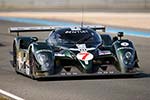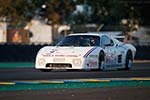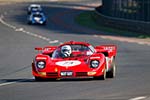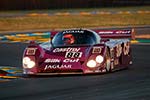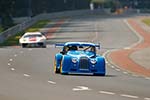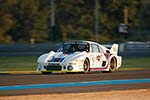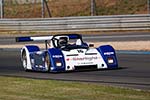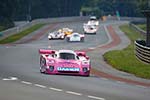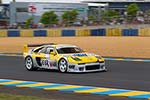Introduction

Every year, history is made at Le Mans in the annual 24 Hours race, which was first held in 1923. This rich and ever expanding history has been celebrated biennially since 2002 with the Le Mans Classic. Like the 24 Hours, it is run on the actual 13.6km Circuit de la Sarthe, which consists mainly of closed off public roads. Over the years, the Le Mans Classic has grown and the period covered in the on-track action has this year been stretched out to run through to the current era. The main event is a 24-hour marathon with six grids running three 43-minute races from 4pm on Saturday through to 4pm on Sunday. That means that each grid also features a session during the night. The grids are split by age with the earliest cars in
Plateau 1 dating from the early 1920s, which the most modern cars in
Plateau 6 feature a cut off date of 1981. The subsequent periods were covered with a Group C support race on Saturday morning and two demonstrations of the
Global Endurance Legends for sports prototypes and GT cars from the early 1990s through to the present day. In addition there were further support races, spectacular club displays throughout the venue and much, much more to see and enjoy.
Our photographers braved scorching conditions to cover the ninth Le Mans Classic with this grid-by-grid,
290-shot gallery.
Porsche at 70

With 19 outright victories and countless more class wins, Porsche is the single most successful manufacturer in the history of the 24 Hours of Le Mans. It was thus only fitting that the German make's 70th anniversary was one of the main themes during the weekend. In addition to the many Porsches that featured in the main event and also the Group C support race, there was a dedicated race for Porsche competition cars through to the early 1970s. Naturally there was a choice of 911s but the 55-minute
Porsche Classic Race Le Mans also featured sports prototypes like 910s and a very rare 908 LH. Starting from second on the grid, it was the long-tail 908 in the hands of Ewens Stievenart that crossed the line first ahead of Raymond Narac in his Porsche 911 Carrera RS. Long after the race both were penalised and Uwe Bruschnik in his 910 was declared the winner.
One of the absolute highlights of the event was a special display of competition Porsches in the
Village. Our eye was particularly caught by the Team Joest 956B on display. This was the very car used to score outright wins at Le Mans in 1985 and 1986, making it the era's most successful Le Mans racer. Since then it has been on display at Joest's private museum for many years until it was acquired by a British historic racer last year.
Group C Racing

One of sports car racing's most revered eras is definitely the Group C period that ran from 1982 through to 1993. Governed mainly by a limited fuel supply, the Group C regulations resulted in some absolutely fantastic racers. Towards the end of the period the regulations were modified to bring them more in line with contemporary Formula 1 cars, resulting in cars that were faster still but even more complicated to run. Despite the complexity and the expense to run these cars, there were over 40 Group C cars entered for the 45-minute race on Saturday morning. Accordingly the riveting sights and sounds of Porsche 962Cs, Silk Cut Jaguars and a thundering Sauber-Mercedes could be enjoyed once more on the long Le Mans straights. An absolutely fabulous sight was a pair of Peugeot 905s lined up for the race, which was probably the first time since 1993. The race itself was particularly difficult to follow as several safety car periods left the field scattered and several penalties saw Michael Lyons in the unique MOMO Gebhardt being declared the victor despite having crossed the line in second.
Global Endurance Legends

A new addition to the event this year was the Global Endurance Legends. Aimed at relatively recent sports prototypes and GT cars, it is not a racing series but instead allows for high speed demonstrations as these machines are generally brutally expensive to prepare and run in actual races. Well over 70 cars were entered and these included almost every variety of Porsche 911 raced from the early 1990s from the wild 911 GT2 through the more recent LMGT and GTE cars. Additionally there were some more unusual cars like a pair of front-engined Panoz prototypes and Chrysler-engined Reynard LMP900 car. It was also great to see a pair of Audi R8s, while the only privately owned Bentley Speed 8 was certainly a star attraction. Our favourite car, however, was the Toyota GT-One or TS020 that was driven for its current custodian by Emanuele Collard and Norman Nato. This car was raced only at Le Mans in 1999 but like its sister cars suffered from Toyota's Le Mans curse that was not lifted until last month. While the Japanese company is usually not included to sell their old racing cars, this GT-One was actually presented to designer Andre de Cortanze, who has since sold it on to another Frenchman.
The Le Mans Classic

After what already was a day filled with motorsport activity, the actual Le Mans Classic kicked off at 4pm on Saturday with the traditional running start of
Plateau 1. Dedicated to pre-War cars only, the three races were dominated by Talbot 105 Team Cars. The only real competition would have come from the T26 Talbot Lago but that suffered engine issues during qualifying. Despite hitting trouble in the first race and losing over three minutes, it was Gareth Burnett in Talbot GO52, who won on scratch.
Separated by just three seconds after more than two hours of racing it was the ex-Jim Clark Jaguar D-Type of Carlos Monteverde and Gary Pearson that just pipped the Patrick Simon driven D-Type in
Plateau 2. The best of the rest was one of just two Maserati 250S sports racers built. Sadly the mighty 450S also entered suffered from technical issues early on.
In
Plateau 3 it was a matter of David beating Goliath as Roger Wills fended off the much more powerful Ferrari 250 GT Breadvan of Lukas Halusa in his ex-Bruce McLaren Lotus 15.

The fourth
Plateau was a true GT40 fest with seven examples filling the first seven spots on the starting grid. It turned out to be a race of attrition with several of the fastest GT40s either hitting trouble or getting penalised. This paved the way for Diogo Ferrao to convert three clean races into victory. Perhaps the most evocative of all was
Plateau 5. It featured none other than the actual 1966 Le Mans winning Ford GT40 Mk2 fresh from a complete restoration for its new owner. Among the other entries were two freshly rebuilt, 1969 specification 917s but both suffered from similar issues as the original 917s had done and played no part in the race. Instead the fifth grid saw a popular winner in Jacques Nicolet with the unique Cosworth DFV engined Duckhams. With fire-spitting Porsche 935s and BMW M1s, the night race of
Plateau 6 was worth the trip to Le Mans alone. Just as in period, the hugely powerful 935s managed to keep tabs on the sports prototypes, which were restricted to three-litre engines only. Nevertheless, it was Yves Scemama in his lovely Cosworth-powered TOJ that picked up the final winners trophy of the event.
Final thoughts
The ninth Le Mans Classic was bigger in every respect than before. The action on track with over 800 cars in action was virtually non-stop from Friday morning, almost the entire infield section of the track was filled with clubs and other exhibitors and a record-breaking 135,000 spectators visited the event. How all this was fitted into one weekend remains a mystery to us but we have tried to capture all that we could in this
290-shot gallery.
|
|
|
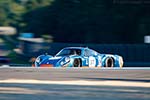
|
|
|
Alpine A220
|
101

|
| Produced in: |
1968 |
| Last updated: |
03 / 29 / 2016 |
|
|
| |

|
|
|
Audi R8
|
116

|
| Years of production: |
2000 - 2002 |
| Last updated: |
06 / 19 / 2017 |
|
|
|
|
| |
|
|
|
|
| |
|
|
|
|
| |
|
|
|
|
| |
|
|
|
|
| |
|
|
|
|
| |
|
|
|
|
| |

|
|
|
Ford GT40
|
393

|
| Years of production: |
1965 - 1969 |
| Last updated: |
12 / 07 / 2015 |
|
|
|

|
|
|
Howmet TX
|
76

|
| Produced in: |
1968 |
| Last updated: |
09 / 10 / 2009 |
|
|
| |

|
|
|
Iso Grifo A3/C
|
114

|
| Years of production: |
1963 - 1965 |
| Last updated: |
02 / 18 / 2013 |
|
|
|

|
|
|
Jaguar XJR-15
|
44

|
| Years of production: |
1990 - 1992 |
| Last updated: |
10 / 04 / 2018 |
|
|
| |
|
|
|

|
|
|
Jaguar D-Type
|
240

|
| Years of production: |
1955 - 1958 |
| Last updated: |
08 / 04 / 2016 |
|
|
| |
|
|
|
|
| |

|
|
|
Lotus 15 Climax
|
212

|
| Years of production: |
1958 - 1960 |
| Last updated: |
09 / 29 / 2014 |
|
|
|
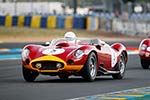
|
|
|
Maserati 450S
|
123

|
| Years of production: |
1956 - 1958 |
| Last updated: |
05 / 28 / 2014 |
|
|
| |

|
|
|
McLaren F1 GTR
|
208

|
| Years of production: |
1995 - 1996 |
| Last updated: |
02 / 20 / 2015 |
|
|
|
|
| |

|
|
|
Nissan R90CK
|
125

|
| Produced in: |
1990 |
| Last updated: |
05 / 21 / 2015 |
|
|
|
|
| |
|
|
|

|
|
|
Peugeot 908
|
146

|
| Produced in: |
2011 |
| Last updated: |
01 / 20 / 2012 |
|
|
| |
|
|
|
|
| |
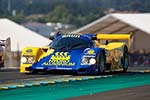
|
|
|
Porsche 962 BM
|
88

|
| Years of production: |
1987 - 1990 |
| Last updated: |
12 / 26 / 2014 |
|
|
|
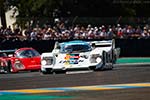
|
|
|
Porsche 962C
|
750

|
| Years of production: |
1985 - 1989 |
| Last updated: |
01 / 01 / 2005 |
|
|
| |

|
|
|
Porsche 956
|
278

|
| Years of production: |
1982 - 1985 |
| Last updated: |
06 / 02 / 2014 |
|
|
|
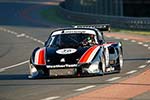
|
|
|
Porsche 935 K3
|
434

|
| Years of production: |
1979 - 1981 |
| Last updated: |
12 / 02 / 2015 |
|
|
| |
|
|
|
|
| |
|
|
|

|
|
|
Porsche 917 K
|
359

|
| Years of production: |
1970 - 1971 |
| Last updated: |
04 / 18 / 2017 |
|
|
| |
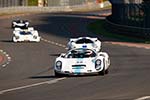
|
|
|
Porsche 910
|
128

|
| Produced in: |
1967 |
| Last updated: |
08 / 30 / 2018 |
|
|
|
|
| |

|
|
|
Saleen S7-R
|
246

|
| Years of production: |
2006 - 2007 |
| Last updated: |
12 / 14 / 2006 |
|
|
|
|
| |

|
|
|
Spice SE89P
|
49

|
| Produced in: |
1989 |
| Last updated: |
03 / 12 / 2015 |
|
|
|
|
| |

|
|
|
Toyota 85C
|
26

|
| Produced in: |
1985 |
| Last updated: |
10 / 10 / 2016 |
|
|
|

|
|
|
Venturi 600 LM
|
38

|
| Years of production: |
1993 - 1994 |
| Last updated: |
03 / 13 / 2019 |
|
|
| |
|
|
|
|
| |

 Every year, history is made at Le Mans in the annual 24 Hours race, which was first held in 1923. This rich and ever expanding history has been celebrated biennially since 2002 with the Le Mans Classic. Like the 24 Hours, it is run on the actual 13.6km Circuit de la Sarthe, which consists mainly of closed off public roads. Over the years, the Le Mans Classic has grown and the period covered in the on-track action has this year been stretched out to run through to the current era. The main event is a 24-hour marathon with six grids running three 43-minute races from 4pm on Saturday through to 4pm on Sunday. That means that each grid also features a session during the night. The grids are split by age with the earliest cars in Plateau 1 dating from the early 1920s, which the most modern cars in Plateau 6 feature a cut off date of 1981. The subsequent periods were covered with a Group C support race on Saturday morning and two demonstrations of the Global Endurance Legends for sports prototypes and GT cars from the early 1990s through to the present day. In addition there were further support races, spectacular club displays throughout the venue and much, much more to see and enjoy.
Every year, history is made at Le Mans in the annual 24 Hours race, which was first held in 1923. This rich and ever expanding history has been celebrated biennially since 2002 with the Le Mans Classic. Like the 24 Hours, it is run on the actual 13.6km Circuit de la Sarthe, which consists mainly of closed off public roads. Over the years, the Le Mans Classic has grown and the period covered in the on-track action has this year been stretched out to run through to the current era. The main event is a 24-hour marathon with six grids running three 43-minute races from 4pm on Saturday through to 4pm on Sunday. That means that each grid also features a session during the night. The grids are split by age with the earliest cars in Plateau 1 dating from the early 1920s, which the most modern cars in Plateau 6 feature a cut off date of 1981. The subsequent periods were covered with a Group C support race on Saturday morning and two demonstrations of the Global Endurance Legends for sports prototypes and GT cars from the early 1990s through to the present day. In addition there were further support races, spectacular club displays throughout the venue and much, much more to see and enjoy. With 19 outright victories and countless more class wins, Porsche is the single most successful manufacturer in the history of the 24 Hours of Le Mans. It was thus only fitting that the German make's 70th anniversary was one of the main themes during the weekend. In addition to the many Porsches that featured in the main event and also the Group C support race, there was a dedicated race for Porsche competition cars through to the early 1970s. Naturally there was a choice of 911s but the 55-minute Porsche Classic Race Le Mans also featured sports prototypes like 910s and a very rare 908 LH. Starting from second on the grid, it was the long-tail 908 in the hands of Ewens Stievenart that crossed the line first ahead of Raymond Narac in his Porsche 911 Carrera RS. Long after the race both were penalised and Uwe Bruschnik in his 910 was declared the winner.
With 19 outright victories and countless more class wins, Porsche is the single most successful manufacturer in the history of the 24 Hours of Le Mans. It was thus only fitting that the German make's 70th anniversary was one of the main themes during the weekend. In addition to the many Porsches that featured in the main event and also the Group C support race, there was a dedicated race for Porsche competition cars through to the early 1970s. Naturally there was a choice of 911s but the 55-minute Porsche Classic Race Le Mans also featured sports prototypes like 910s and a very rare 908 LH. Starting from second on the grid, it was the long-tail 908 in the hands of Ewens Stievenart that crossed the line first ahead of Raymond Narac in his Porsche 911 Carrera RS. Long after the race both were penalised and Uwe Bruschnik in his 910 was declared the winner. One of sports car racing's most revered eras is definitely the Group C period that ran from 1982 through to 1993. Governed mainly by a limited fuel supply, the Group C regulations resulted in some absolutely fantastic racers. Towards the end of the period the regulations were modified to bring them more in line with contemporary Formula 1 cars, resulting in cars that were faster still but even more complicated to run. Despite the complexity and the expense to run these cars, there were over 40 Group C cars entered for the 45-minute race on Saturday morning. Accordingly the riveting sights and sounds of Porsche 962Cs, Silk Cut Jaguars and a thundering Sauber-Mercedes could be enjoyed once more on the long Le Mans straights. An absolutely fabulous sight was a pair of Peugeot 905s lined up for the race, which was probably the first time since 1993. The race itself was particularly difficult to follow as several safety car periods left the field scattered and several penalties saw Michael Lyons in the unique MOMO Gebhardt being declared the victor despite having crossed the line in second.
One of sports car racing's most revered eras is definitely the Group C period that ran from 1982 through to 1993. Governed mainly by a limited fuel supply, the Group C regulations resulted in some absolutely fantastic racers. Towards the end of the period the regulations were modified to bring them more in line with contemporary Formula 1 cars, resulting in cars that were faster still but even more complicated to run. Despite the complexity and the expense to run these cars, there were over 40 Group C cars entered for the 45-minute race on Saturday morning. Accordingly the riveting sights and sounds of Porsche 962Cs, Silk Cut Jaguars and a thundering Sauber-Mercedes could be enjoyed once more on the long Le Mans straights. An absolutely fabulous sight was a pair of Peugeot 905s lined up for the race, which was probably the first time since 1993. The race itself was particularly difficult to follow as several safety car periods left the field scattered and several penalties saw Michael Lyons in the unique MOMO Gebhardt being declared the victor despite having crossed the line in second. A new addition to the event this year was the Global Endurance Legends. Aimed at relatively recent sports prototypes and GT cars, it is not a racing series but instead allows for high speed demonstrations as these machines are generally brutally expensive to prepare and run in actual races. Well over 70 cars were entered and these included almost every variety of Porsche 911 raced from the early 1990s from the wild 911 GT2 through the more recent LMGT and GTE cars. Additionally there were some more unusual cars like a pair of front-engined Panoz prototypes and Chrysler-engined Reynard LMP900 car. It was also great to see a pair of Audi R8s, while the only privately owned Bentley Speed 8 was certainly a star attraction. Our favourite car, however, was the Toyota GT-One or TS020 that was driven for its current custodian by Emanuele Collard and Norman Nato. This car was raced only at Le Mans in 1999 but like its sister cars suffered from Toyota's Le Mans curse that was not lifted until last month. While the Japanese company is usually not included to sell their old racing cars, this GT-One was actually presented to designer Andre de Cortanze, who has since sold it on to another Frenchman.
A new addition to the event this year was the Global Endurance Legends. Aimed at relatively recent sports prototypes and GT cars, it is not a racing series but instead allows for high speed demonstrations as these machines are generally brutally expensive to prepare and run in actual races. Well over 70 cars were entered and these included almost every variety of Porsche 911 raced from the early 1990s from the wild 911 GT2 through the more recent LMGT and GTE cars. Additionally there were some more unusual cars like a pair of front-engined Panoz prototypes and Chrysler-engined Reynard LMP900 car. It was also great to see a pair of Audi R8s, while the only privately owned Bentley Speed 8 was certainly a star attraction. Our favourite car, however, was the Toyota GT-One or TS020 that was driven for its current custodian by Emanuele Collard and Norman Nato. This car was raced only at Le Mans in 1999 but like its sister cars suffered from Toyota's Le Mans curse that was not lifted until last month. While the Japanese company is usually not included to sell their old racing cars, this GT-One was actually presented to designer Andre de Cortanze, who has since sold it on to another Frenchman. After what already was a day filled with motorsport activity, the actual Le Mans Classic kicked off at 4pm on Saturday with the traditional running start of Plateau 1. Dedicated to pre-War cars only, the three races were dominated by Talbot 105 Team Cars. The only real competition would have come from the T26 Talbot Lago but that suffered engine issues during qualifying. Despite hitting trouble in the first race and losing over three minutes, it was Gareth Burnett in Talbot GO52, who won on scratch.
After what already was a day filled with motorsport activity, the actual Le Mans Classic kicked off at 4pm on Saturday with the traditional running start of Plateau 1. Dedicated to pre-War cars only, the three races were dominated by Talbot 105 Team Cars. The only real competition would have come from the T26 Talbot Lago but that suffered engine issues during qualifying. Despite hitting trouble in the first race and losing over three minutes, it was Gareth Burnett in Talbot GO52, who won on scratch. The fourth Plateau was a true GT40 fest with seven examples filling the first seven spots on the starting grid. It turned out to be a race of attrition with several of the fastest GT40s either hitting trouble or getting penalised. This paved the way for Diogo Ferrao to convert three clean races into victory. Perhaps the most evocative of all was Plateau 5. It featured none other than the actual 1966 Le Mans winning Ford GT40 Mk2 fresh from a complete restoration for its new owner. Among the other entries were two freshly rebuilt, 1969 specification 917s but both suffered from similar issues as the original 917s had done and played no part in the race. Instead the fifth grid saw a popular winner in Jacques Nicolet with the unique Cosworth DFV engined Duckhams. With fire-spitting Porsche 935s and BMW M1s, the night race of Plateau 6 was worth the trip to Le Mans alone. Just as in period, the hugely powerful 935s managed to keep tabs on the sports prototypes, which were restricted to three-litre engines only. Nevertheless, it was Yves Scemama in his lovely Cosworth-powered TOJ that picked up the final winners trophy of the event.
The fourth Plateau was a true GT40 fest with seven examples filling the first seven spots on the starting grid. It turned out to be a race of attrition with several of the fastest GT40s either hitting trouble or getting penalised. This paved the way for Diogo Ferrao to convert three clean races into victory. Perhaps the most evocative of all was Plateau 5. It featured none other than the actual 1966 Le Mans winning Ford GT40 Mk2 fresh from a complete restoration for its new owner. Among the other entries were two freshly rebuilt, 1969 specification 917s but both suffered from similar issues as the original 917s had done and played no part in the race. Instead the fifth grid saw a popular winner in Jacques Nicolet with the unique Cosworth DFV engined Duckhams. With fire-spitting Porsche 935s and BMW M1s, the night race of Plateau 6 was worth the trip to Le Mans alone. Just as in period, the hugely powerful 935s managed to keep tabs on the sports prototypes, which were restricted to three-litre engines only. Nevertheless, it was Yves Scemama in his lovely Cosworth-powered TOJ that picked up the final winners trophy of the event.





